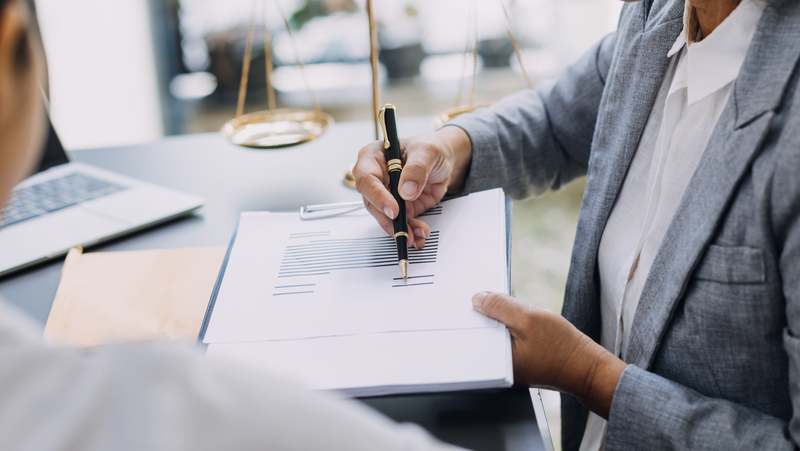What to Expect During a Civil Litigation Process

Key Takeaways:
Embarking on a civil litigation process can seem daunting, yet understanding the journey provides clarity. This guide offers insights on what to expect, covering the steps from initial filing to post-trial motions and emphasizing the importance of preparation and cooperation with legal counsel.
Introduction
The civil litigation process resolves disputes between parties, including individuals, businesses, or entities. Unlike criminal litigation, civil cases pertain more to personal rights and obligations than offenses against the state. Navigating the steps involved can be complex, but understanding the sequence and purpose of each step can reduce anxiety and contribute to a smoother journey. This article breaks down the phases of a civil litigation process, offering a comprehensive overview of what to expect at each stage.
Filing the Lawsuit
The journey of civil litigation begins with filing a lawsuit. The plaintiff—the party initiating the lawsuit—prepares a complaint outlining the allegations against the defendant and setting the legal process stage. Jurisdiction plays a crucial role here, as the plaintiff must file the lawsuit in a court with authority over the subject matter and parties involved. For instance, those dealing with matters related to civil law Hackensack NJ, must ensure they file in an appropriate jurisdiction to proceed. Once the complaint is filed, the defendant receives a summons, officially notifying them of the legal action and compelling them to respond within a given timeframe.
Discovery Process
The discovery phase is a critical part of the civil litigation process, as it allows both parties to gather and exchange information pertinent to the case. This phase ensures no surprises at trial and provides a clearer picture of the available evidence. Discovery methods include interrogatories, depositions, requests for documents, and admissions of fact. The goal is to build a strong case by uncovering all relevant facts and documents. Both sides must work closely with their legal counsel during this phase, as strategic decisions can significantly impact the trial outcome.
Pre-Trial Motions and Conferences
After the discovery phase, pre-trial motions and conferences set the groundwork for the trial. Before the trial proceeds, pre-trial motions can request the court decide on specific legal issues. These may include motions to dismiss the case, motions for summary judgment, or motions to exclude specific evidence. Pre-trial conferences, however, are designed to help streamline the trial by resolving preliminary matters and encouraging settlement discussions. This phase also helps both sides understand each other’s arguments more clearly, often leading to settlements that preclude the need for a trial.
The Trial
The trial itself is the heart of the civil litigation process. During this phase, both parties present their evidence and arguments, allowing a judge or jury to determine the case’s outcome. The trial is structured, beginning with opening statements from both sides, followed by witness examinations and cross-examinations. Each side can present evidence to support their claims or defenses, which may include testimony, documents, and expert opinions. The trial concludes with closing arguments, where attorneys summarize their case and aim to persuade the judge or jury to deliver a favorable verdict.
Verdict and Judgment
Once the trial ends, the judge or jury deliberates before reaching a verdict. The verdict determines the case’s outcome in favor of the plaintiff or the defendant. If a jury is involved, they will decide based on the evidence and arguments presented during the trial. In cases where the judge presides over the trial, they will issue a judgment based on legal principles and factual determinations made during the proceedings. The judgment may include monetary compensation, injunctive relief, or declaratory relief, depending on the nature of the case and the claims involved.
Post-Trial Motions
After the verdict is rendered, there are opportunities for post-trial motions. These motions address issues with the trial proceedings or the verdict itself. Typical post-trial motions include motions for a new trial, motions to amend the judgment, or motions for judgment notwithstanding the verdict. This phase allows the parties to raise concerns about errors or injustices that may have occurred during the trial. Post-trial motions provide a mechanism for ensuring fairness and accuracy in the judicial process, and the court has the discretion to grant or deny these motions based on the merits of each argument presented.
Conclusion
Navigating the civil litigation process can be complex, but understanding each step helps set expectations and alleviate uncertainties. From initial filing through to post-trial motions, each phase serves a distinct purpose in ensuring justice is served. Preparation and collaboration with experienced legal counsel are essential in safeguarding interests and navigating the nuances of civil litigation. By comprehensively understanding this process, parties can better manage their cases, make informed decisions, and achieve fair outcomes.



